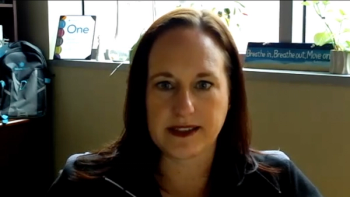
Oncology NEWS International
- Oncology NEWS International Vol 15 No 5
- Volume 15
- Issue 5
Medicare Coding for Oncology Services Moves Into a New Era
Medicare codes for oncology services have been in transition over the past few years, and oncologists are dealing with more changes now as Medicare moves from the temporary G-codes used in 2005 to cover administration of chemotherapy and other services to the permanent Current Procedural Terminology or CPT codes, which kicked in this year.
WASHINGTONMedicare codes for oncology services have been in transition over the past few years, and oncologists are dealing with more changes now as Medicare moves from the temporary G-codes used in 2005 to cover administration of chemotherapy and other services to the permanent Current Procedural Terminology or CPT codes, which kicked in this year.
Reimbursements Lowered
Overall, changes in the codes have not had the optimal result for office-based oncologists, said Roberta Buell, MBA, vice president of provider services and reimbursement for P4 Healthcare, Columbia, Maryland, and a consultant in oncology reimbursement.
Speaking at the Community Oncology Alliance's annual meeting, Ms. Buell told the audience that the new Medicare coding changes have lowered reimbursements substantially for oncologists from those obtained with the transitional payment rate in 2004.
"I want to talk about why coding may be a rip-off, if you expect that coding would make up the 32% in the transitional drug administration rates from 2004," she said. "We all have to be careful right this minute. We should not let private payers go down the same road Medicare did."
In 2006, an important general principle for oncologists is that only one initial code is allowed per day, Ms. Buell said. Before and after infusions and pushes must always be categorized as sequential or concurrent to sequential. One concurrent code per day can be billed.
Any infusion of 15 minutes or less must be coded as a pusha rule that affects reimbursement for the administration of many supportive drugs, she pointed out. What's more, following each infusion's initial hour, the time spent must be more than 30 minutes to be coded and billed, another rule that may lower reimbursements.
The overall impact of the drug administration coding changes since 2004 has been significant, with many protocols having reimbursement decreases of 20% to 30% and some as much as 54%, Ms. Buell said.
2006 demo project
A Medicare Demonstration Project in 2006 will allow oncologists to regain some ground by coding and billing for evaluation and management (E&M) services of 13 cancers (see article above). According to Ms. Buell's own analysis, participation in the demonstration project might add about $50,000 in revenue to the average practice of two or three oncologists. The amount of revenue is dependent on the frequency patterns of E&M serviceswhich are highly variable in oncology.
"While the Demo is voluntary, obviously, nonparticipation in the demo is money lost," she said. She also believes that oncologists are the first group to be paid for performance and, in a sense, are "pioneers."
To receive proper payment for qualified patients, Ms. Buell reminded physicians that they can and should bill for cognitive services like care plan oversight, home health certification and recertification, smoking cessation counseling, and counseling and coordination of care. All are billable to Medicare but are often overlooked, she said.
Nevertheless, she concluded, taking part in the demonstration project and billing for these legitimate services would not make up for the reductions in reimbursement oncologists are experiencing. "It will not change the overall picture," she said. "I do think some of the coding has to change."
Articles in this issue
over 19 years ago
Genentech Files sBLA for Avastin for First-Line NSCLC Treatmentover 19 years ago
RFA Effective for Single, Small Hepatocellular Carcinomaover 19 years ago
New Imaging, ChemoRT Recommendations From NCCNover 19 years ago
Panitumumab Improves PFS in Advanced Colon Caover 19 years ago
Studies Question Watchful Waiting for Some Prostate Ca Ptsover 19 years ago
Growing Evidence Supports Stem Cell Hypothesis of Cancerover 19 years ago
FDA Approves New Every-3-Week Dosing for Aranespover 19 years ago
Telephone Often Delivers News of Breast Cancer Diagnosisover 19 years ago
IND Submitted for CYT-500Newsletter
Stay up to date on recent advances in the multidisciplinary approach to cancer.
















































































